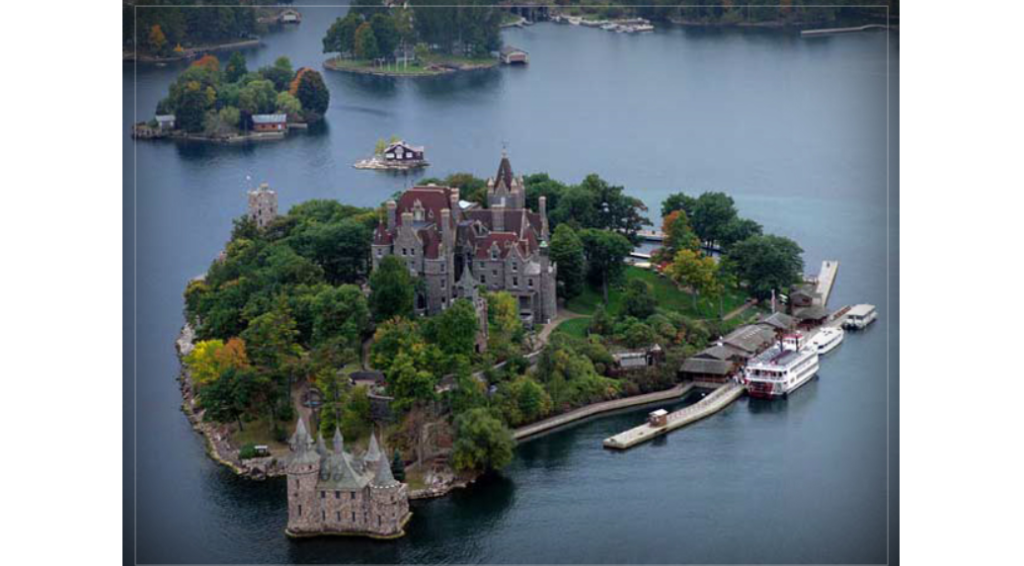Boldt Castle: A Monument of Love and Loss in New York’s Thousand Islands

Boldt Castle, located on Heart Island in the Thousand Islands of the Saint Lawrence River, along the northern border of New York State, is a monument to the grandeur of the Gilded Age and a story of tragic romance. The castle’s history begins with George C. Boldt, a successful hotel magnate who was the proprietor of the prestigious Waldorf Astoria Hotel in New York City.
Construction of Boldt Castle started in 1900 as a tribute to Boldt’s beloved wife, Louise. The castle was designed to be a testament to his love for her, fashioned in the popular architectural style of Rhineland castles in Germany, reflecting Boldt’s Prussian heritage. The grand structure was planned to feature 120 rooms, including a powerhouse, Italian gardens, a drawbridge, alster tower (children’s playhouse), and a dove cote.

Tragically, in 1904, Louise Boldt died suddenly. Heartbroken, George Boldt halted all construction on Heart Island and never returned to the island. The castle remained unfinished and was left to deteriorate for 73 years. It became a victim of vandalism and exposure to harsh weather conditions, standing as a forlorn monument to Boldt’s grief and lost love.
In 1977, the Thousand Islands Bridge Authority acquired the property. Recognizing the historical and cultural significance of the castle, they decided to preserve it. They began a restoration project funded by the revenues generated from the castle’s tours, without the use of government funds. The restoration aimed to complete the castle as originally planned, except for modifications to accommodate modern tourists.

Today, Boldt Castle is open to the public as a tourist attraction and event venue. Visitors can explore the restored rooms, marvel at the grand architecture, and learn about the love story that inspired its creation. The Yacht House on Wellesley Island, part of the estate, houses a collection of antique wooden boats. The Boldt Castle and its surrounding structures serve as a popular destination for tourists, wedding celebrations, and cultural events, making it a significant landmark in New York’s Thousand Islands region.